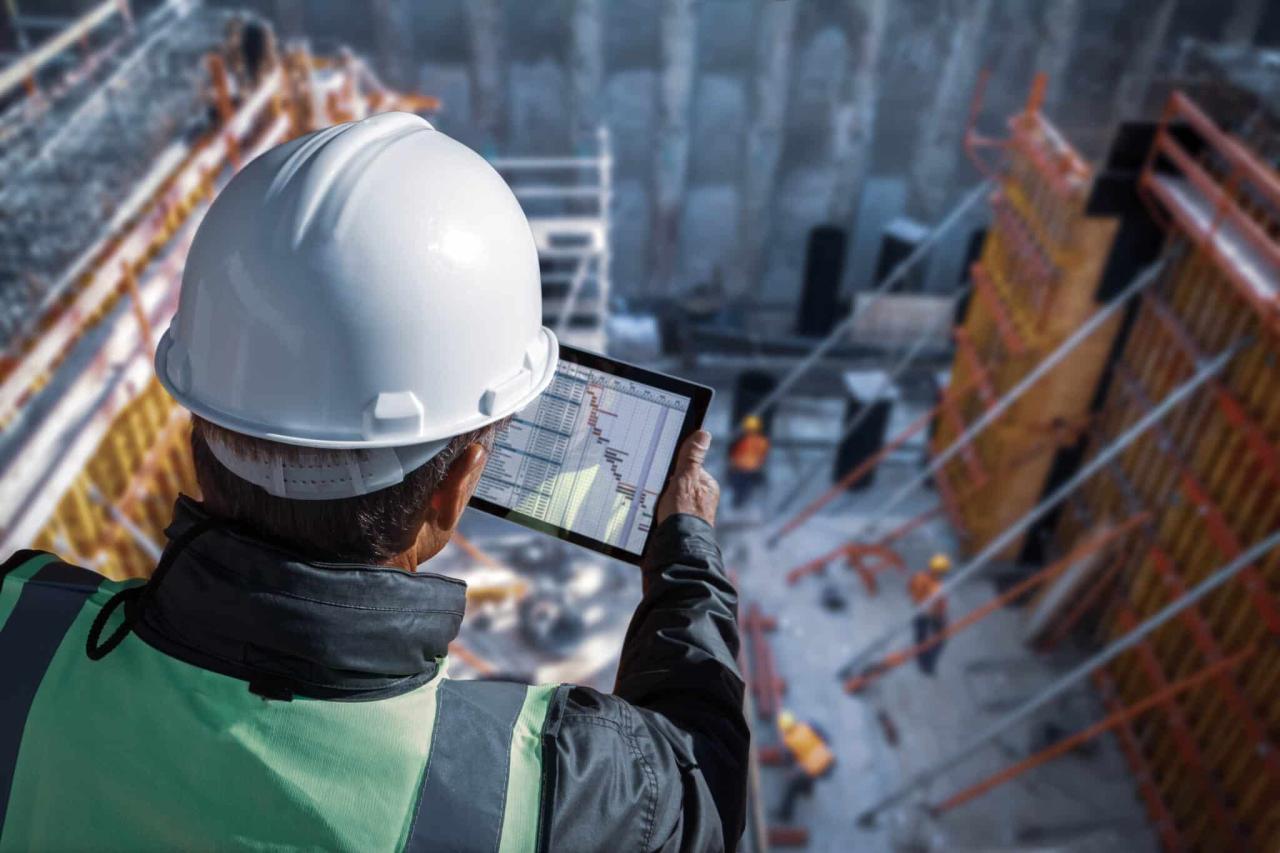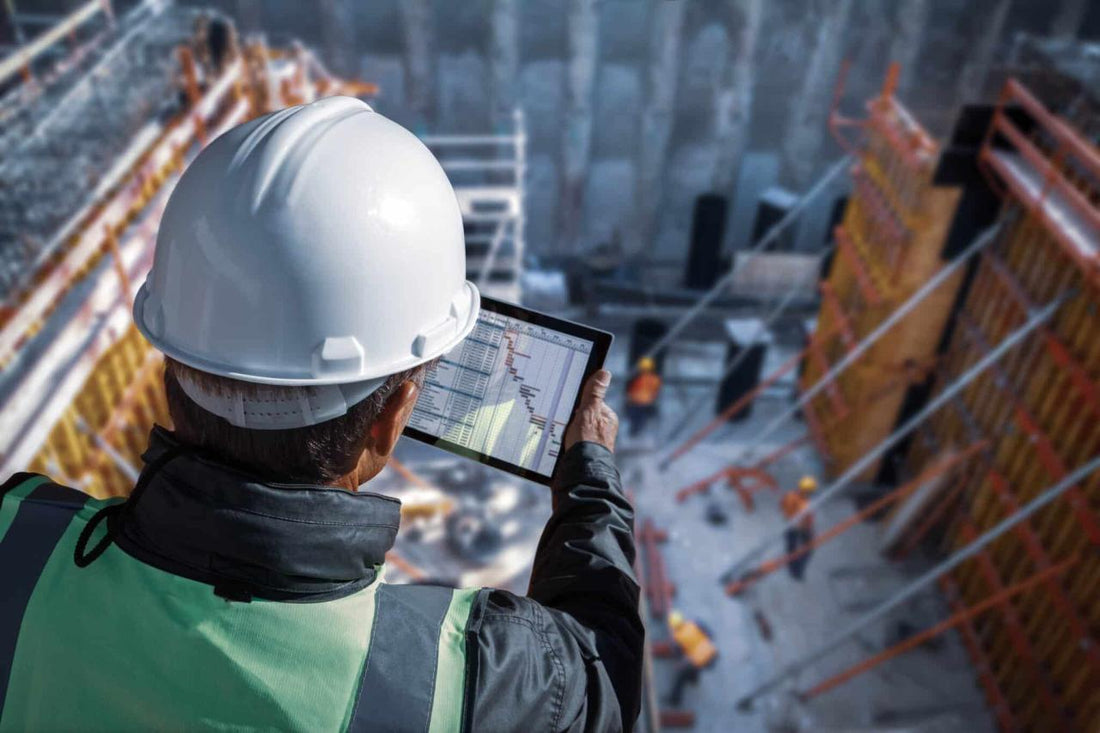Workers are your most valuable asset and the best way to protect that asset is through the implementation of a high-quality health and safety program.
The key to better health and safety management in construction is to move away from the traditional reactive approach (taking action after an incident occurs). Instead, project managers and foremen must find and correct hazards before they cause injury or illness.
We will discuss the best ways to develop, implement and improve your health and safety practices to keep everyone safe in your workplace.
7 ways to better manage health and safety on your construction projects
Improving your health and safety practices can bring benefits such as improved productivity and work quality, increased worker morale, better recruitment and retention practices and much more – you can use the following 7 tips to make your workplaces safer and bring these benefits to your organization.
1. Commit to a health and safety program
Communicating your commitment to health and safety management in construction through a clear policy is as important to your organization as productivity and profitability.
You need to establish specific goals and objectives in a written policy and set clear expectations for everyone, from yourself to the workers and the overall program. Focus on specific actions and set measurable goals to improve worker safety and health.
Then, develop a plan to achieve those goals by determining and allocating resource needs, assigning responsibilities to specific people, and creating defined deadlines for meeting your program's health and safety goals.
2. Involve workers in your safety practices
Having a solid health and safety program is not enough – workers and managers must voluntarily participate in the program.
Show that you value your workers' contributions and encourage them to participate and report any health and safety concerns:
- Maintain an open door policy: Invite workers at all levels to speak to you and other managers about health and safety issues, concerns or suggestions.
- Establish simple procedures for reporting injuries, hazards, etc.: Allow anonymous reporting so that workers can express their concerns without fear of reprisal.
- Remove barriers to participation: Ensure everyone has the ability to participate in the program and dedicate time to facilitate participation, such as holding regular health and safety meetings.
3. Inspect your workplace to identify health and safety risks
As workplace conditions change, new hazards can emerge at any time. It is important to perform regular and frequent inspections as you go through the different phases of construction, as business arrives and departs, after adverse weather conditions, etc.
Identifying physical safety hazards is generally easier than health hazards, which are often less obvious and more complex. Check each workplace for the following health hazards:
- Chemical hazards: Low exposure limits, unventilated spaces, etc.
- Biological hazards: Sources of mold, toxic materials, infectious diseases, etc.
- Physical hazards: Excessive noise, radiation sources, etc.
- Ergonomic risks: heavy lifting, repetitive movements, etc.
 4. Implement a hazard control plan
4. Implement a hazard control plan
Another great way to improve your construction health and safety management program is to develop a hazard control plan to keep on-site personnel safe during emergencies or non-routine activities.
In addition to approaching tasks that workers don't normally perform with extra caution, you should update your hazard control plan to include provisions for predictable events – falls, fires, hazardous materials spills, natural disasters, etc.
It's also always a good idea to conduct drills, ensuring your workers understand the safety procedures you implement and that they provide adequate protection.
5. Provide education and awareness training
A large part of health and safety management in construction consists of the education and training of employers, managers and workers. This ensures that everyone has the knowledge and skills to perform their work safely without creating additional hazards, putting themselves or other workers at risk.
Your awareness program should:
- Contains steps for reporting hazards, injuries, etc.
- Detail what to do in an emergency.
- Provide training at literacy levels and in languages that all workers can understand.
- List the goals, procedures and policies of your health and safety program.
- Include contact information for the person leading the training program.
6. Monitor your program performance and progress
After establishing new health and safety procedures, it is crucial to evaluate the program frequently to look for opportunities for improvement, track goals and progress, and identify deficiencies.
You must initially and periodically monitor the following indicators:
- Workers' participation
- Safety Tips
- Workers Compensation Data
- The number of hazards and near misses
- The number and severity of injuries
- The number of hazards found during these inspections
- The frequency of inspections
- Time taken to respond to health and safety reports
- Worker feedback
- Results of monitoring worker exposure
7. Digitize your QHSE processes
The Quality, Health, Safety and Environmental management system (QHSE) ensures safe and healthy working conditions for all workers. However, many project managers and organizations still use manual methods for their QHSE processes, making transparent collaboration and real-time updates unrealistic.
Digitizing and automating your QHSE processes is one of the most impactful things you can do to manage construction health and safety more efficiently – it allows you to perform on-site inspections faster, capture defects with a complete audit trail, standardize your forms and reports and keep your workers connected to your health and safety program.

